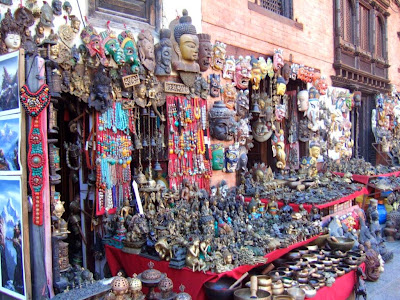
Swayambhunath is an ancient religious cultural site on top of a hillock 77 meter above valley level 3km away from Kathmandu. It is the oldest and most enigmatic religious complex among all holy shrines in Kathmandu Valley. As per inscription on the historical relic, Swayambhunath had been an important Buddhist pilgrimage destination since 1500 years ago. It was believed that the glorious Buddhist Chaityas was to be first established around 464-505BC. The surrounding area of the site is now filled with Chaityas, temples, painted images of deities and other religious objects.



Swayambhu is an assemble of four distinct elements: Air, Heat, Earth and Water.The Stupa consists of a dome at the base representing the entire world. There are four pentagonal Toran engraved with images above each of its 4 sides. The 13 tiers behind and above the Toran symbolizes the 13 stages of spiritual realization that sentient beings have to go through for enlightenment. The Gajur is placed at the small space above the tiers. The pair of two large Buddha eyes represents wisdom and compassion. The base of Stupa and its four sides are carved with five images of Buddha including Buddha Vairochana and Amitabha. The lofty conical white dome and its glittering golden spire are visible for many miles and from all sides of The Valley.



Swayambhunath temple is also known as Monkey Temple as there are many monkeys living around. It was believed that the monkeys were transformed from the head lice from the hair of Boddhisattva Manjushri who kept long hair in order to raise up the hill which was the site where the Temple presently stands. The mythical legends said that Kathmandu Valley was once entirely filled up with an enormous lake with a miraculous lotus planted by a past Buddha fully blossom in it. The brilliant light radiated from the mysterious lotus attracted saints, sages and divinities to come here and venerate for its power to enlightenment. Bodhisattva Manjushri after having a vision of lotus dazzling light, also flew here to worship. He found that it would be much easier for human to access also if without water in the lake. He thus cut a gorge in the mountains surrounded the lake and let the water drained off, leaving behind the valley which is now where the present Kathmandu is. The lotus was raised up as a hill and the light was converted into the stupa. This was where the name of Swayambhu came from as it was self created.



Pratappur and Anantaour are the two excellent Shikhar styled Pagoda Temples built at the northern and southern side of the Stupa by King Pratap Malla in 17th century as the guards of Swayambhu Chaitya. Pratappur implied the King himself and Anantapur referred to his queen Ananta priya.







Swayambhu Temple is the most sacred site to Newars Buddhist mainly due to its mythological history and origin myth.


Swayambhu revered by Buddhists as well as Hindus in Kathmandu Valley, is an Unesco listed world heritage site, as it holds great cultural, historical and religious value for both religions.


The hill is a mosaic of small chaityas and pagodas.




There was not much things to see inside the Museum Hall, a recently added structure. But the open space is fully covered with small shrines and chaitya with Buddha statues.



Chaitya, bells and prayer wheels.



Group Chaitya


Shops, restaurants and hostels are available within the site.



There are two ways to access to the main site. Instead of climbing up the long stairway of 365 steps that lead directly to the main platform of temple, we drove up from the road that around the hill and entered from its south west entrance.



Ancient Bells and World Peace Pond.



The South West Entrance Gate.


The last glimpse of Swayambhu Temple site.


No comments:
Post a Comment